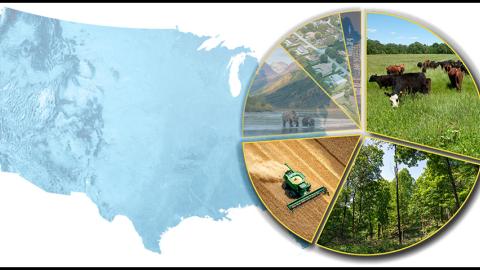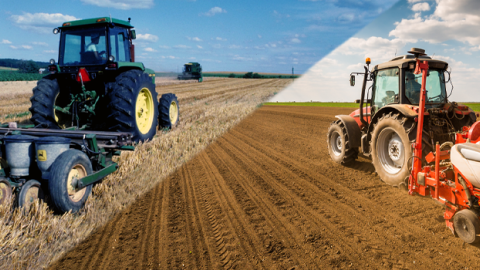As part of its research program on the economics of land resources, USDA, Economic Research Service (ERS) compiles data and conducts statistical analysis on a variety of topics concerning agricultural land use, land values, and land ownership and tenure. The Major Land Uses project, maintained by ERS since 1945, is the most comprehensive accounting of all major uses of public and private land in the United States. ERS also conducts foundational analyses on various aspects of U.S. farmland ownership, including landlords, tenants, rental markets, acquisition patterns, and transfer plans, using data from the ERS and the USDA, National Agricultural Statistics Service (NASS) 2014 Tenure, Ownership, and Transition of Agricultural Land (TOTAL) survey, the Census of Agriculture, and other sources. Recent research on the drivers of farmland values utilizes several data sources, including the NASS June Area Survey. Stakeholders (including policymakers, academics, and the broader rural community) rely on ERS researchers to conduct peer-reviewed national and regional studies concerning the farmland economy.
In 2017, about 53 percent of the U.S. land base (including Alaska and Hawaii) was used for agricultural purposes, including cropping, grazing (on pasture, range, and in forests), and farmsteads/farm roads (see data on Major Land Uses). Land use and land-use changes have important economic and environmental implications for commodity production and trade, open space, soil and water conservation, air quality and atmospheric greenhouse gas concentrations, and other areas of policy relevance.
With an estimated value of more than $3 trillion in 2023, the value of farm real estate (land and structures) accounted for over 80 percent of the total value of U.S. farm sector assets (see more on farm assets and debt, including real estate). Because real estate comprises such a significant portion of the balance sheet of U.S. farms, farmland and real estate values are critical barometers of the farm sector's financial performance. Changes in farmland values also affect the financial well-being of agricultural producers because farm real estate is the largest single component in a typical farmer's investment portfolio and it serves as the principal source of collateral for farm loans.
Broadly speaking, farmland ownership patterns identify the extent to which farmland is owned by farm operators and nonoperators (landowners who do not themselves actively participate in a farm operation) who own land for investment or other purposes. About 40 percent of U.S. farmland has been rented over the last 30 years. Nonoperator landlords owned 31 percent of land in farms in 2014, making up 80 percent of land operated by tenant farmers.



